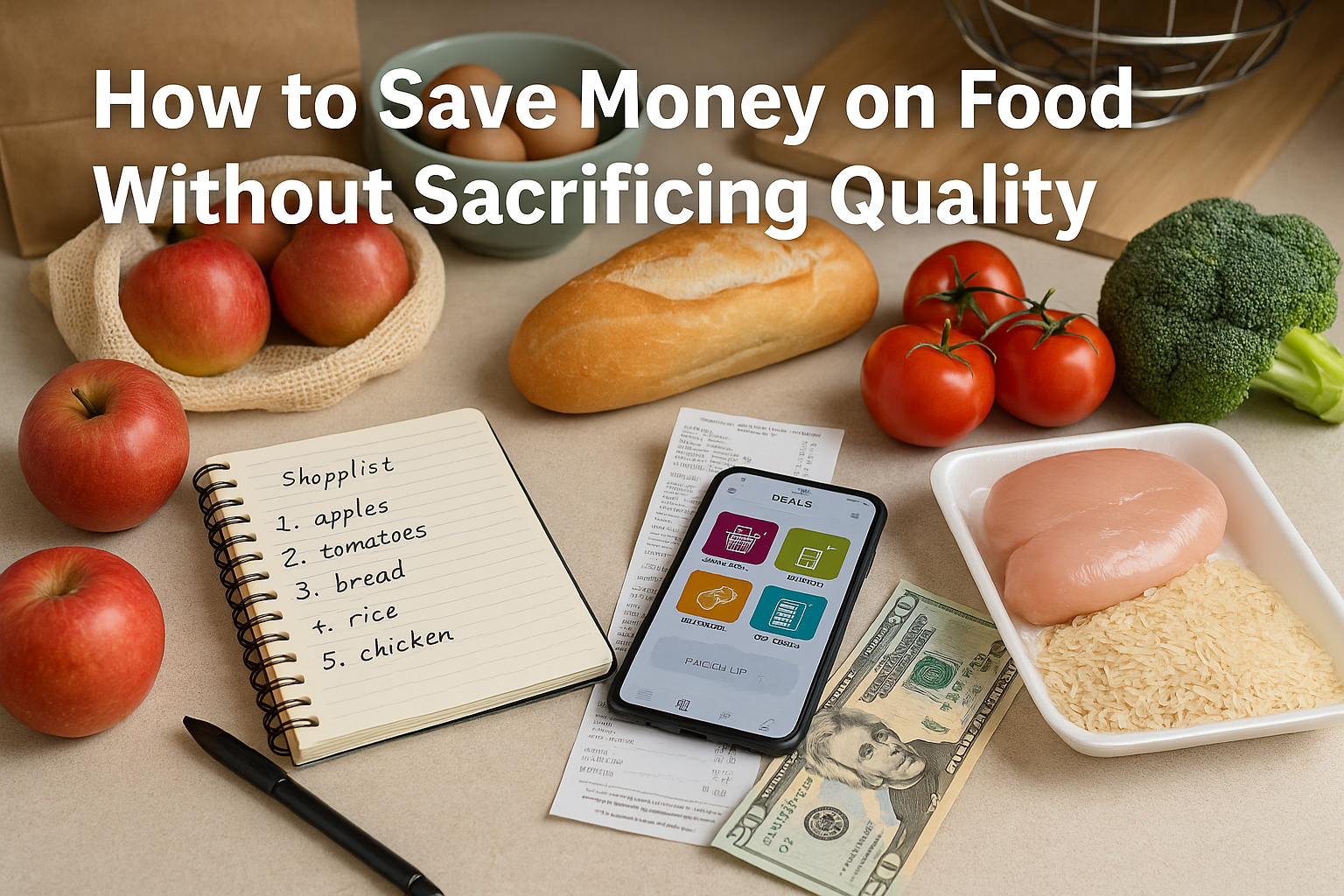Food is one of the largest monthly expenses for most households. But saving money on groceries doesn’t have to mean eating poorly or giving up the foods you love.
With a little planning and smart habits, you can reduce your food budget while still enjoying healthy, satisfying meals. Here’s how to make it happen.
Make a Weekly Meal Plan
One of the easiest ways to control food costs is to plan your meals in advance. Take 15 minutes each week to decide what you’ll eat for breakfast, lunch, and dinner.
Base your meals on ingredients you already have and items on sale at your local store. This helps reduce waste and prevents those last-minute takeout orders that break your budget.
Create a Grocery List—and Stick to It
Once your meal plan is ready, write down exactly what you need. Organize your list by category (produce, dairy, frozen foods, etc.) to make your shopping trip faster and more focused.
Avoid shopping when you’re hungry—impulse buys are more likely to happen when your stomach is in charge.
Shop Seasonal and Local
Fruits and vegetables that are in season tend to be cheaper and taste better. Local farmers’ markets and discount stores often have fresh, affordable produce.
Buying what’s in season not only saves money but also encourages variety in your diet.
Use Store Brands and Compare Prices
Store-brand products are often just as good as name brands—and much cheaper. Don’t be afraid to try them, especially for pantry staples like pasta, rice, beans, and canned goods.
Also, compare prices per unit (per ounce, liter, or gram) instead of just looking at the full price. That way, you can choose the best deal for your money.
Cook at Home More Often
Eating out frequently is one of the quickest ways to drain your food budget. Cooking at home is healthier, more affordable, and allows you to control ingredients and portions.
Start by preparing simple meals a few nights per week, then gradually add variety as you gain confidence in the kitchen.
Embrace Leftovers
Don’t let good food go to waste. Make it a habit to store and reuse leftovers for lunches or future dinners. Some meals even taste better the next day.
You can also freeze extra portions for busy days when you don’t feel like cooking.
Avoid Pre-Packaged and Ready-Made Foods
Convenience foods—like pre-chopped veggies, frozen dinners, and single-serve snacks—are usually much more expensive than whole foods.
Instead, buy ingredients in bulk and prepare your meals from scratch. It may take a little extra time, but the savings are worth it.
Buy in Bulk (When It Makes Sense)
Items like rice, pasta, beans, and oats are great for buying in bulk, especially if you have storage space. Bulk prices are typically lower, and you’ll make fewer trips to the store.
Just be cautious with perishable items. Buying more than you can use before it expires is a waste—not a savings.
Use Coupons and Cashback Apps
Take advantage of digital coupons and grocery apps that offer cashback or discounts. Many supermarkets have loyalty programs or apps that give personalized deals based on your shopping habits.
Saving $1 here and there might not seem like much, but over time, it adds up.
Practice Portion Control
Cooking too much food often leads to waste—or overeating. Measure your ingredients and stick to recommended portion sizes. It’s better for your health and your wallet.
If you do make extra, store it properly for later use.
Eat Well, Spend Less
Saving money on food doesn’t mean sacrificing taste or nutrition. With smart planning, a little effort in the kitchen, and a focus on whole ingredients, you can feed yourself and your family well—without breaking the bank.
Remember: the key isn’t cutting quality—it’s cutting waste and spending with intention.
